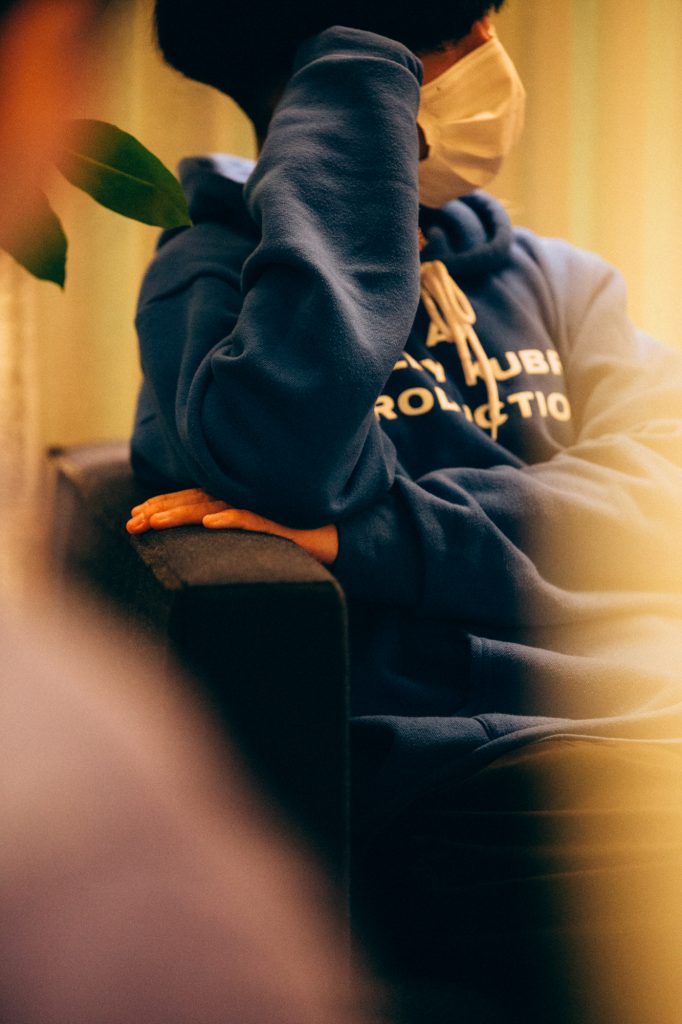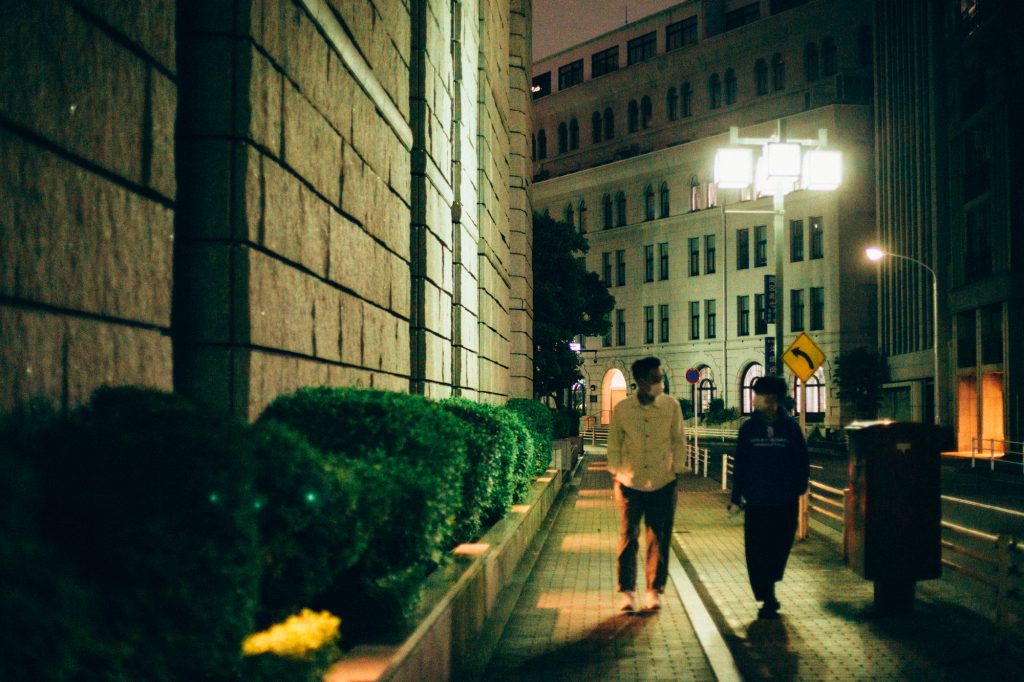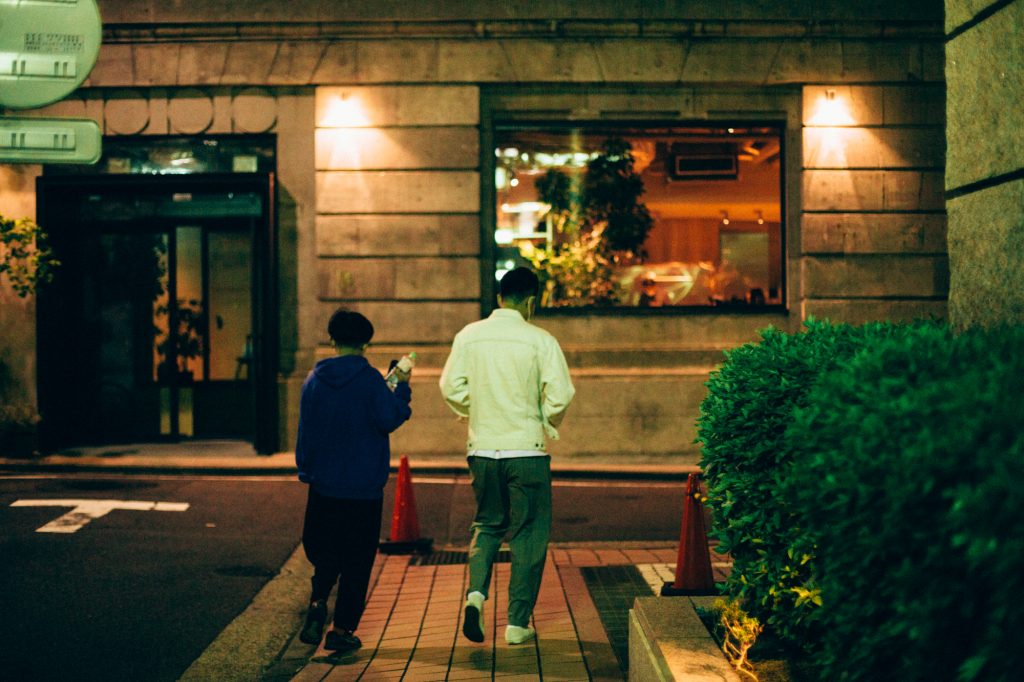


Does the chair or the space come first?
Gridlines drawn from the tabletop of culture
●As a breif introduction, please tell us about your time as a student.
I was born in Kobe, and during my second year of high school, the Great Hanshin Earthquake struck. I saw the city I used to play in reduced to zero. At the time, I was living in an area called Nagata Ward, which was severely damaged by fire, and so I was evacuated to a gymnasium. There was no gas, electricity or water and so life was very difficult. Looking back now, I think that experience had a great impact on me. Normally, you live in the city you are given, but the city I was given collapsed. I was able to see the process of reconstruction with my own eyes. I had to live with the situation in a positive way, watching the people rebuild it.
●When did you first become aware of architecture as a profession?
Even before the earthquake, I was vaguely interested in design. At the time, I was flipping through ‘Kansai Walker’ to find a gift for my girlfriend before Christmas, and I was stunned to find an Eames chair. I had been exposed to chairs at school and fast food restaurants, and I was aware that they were common household things and something to sit on. But in my second year of high school, for the first time, I saw a chair designed by someone. When I asked my art teacher about it, he explained to me Rietveld (*1) and Le Corbusier (*2). He told me, “This is a chair designed by the Eames (*3) couple.” This was when I began learning about the concept of design and realized that the city was full of it; from the shoes I wore to just about everything else. It was then that I started to think about becoming a designer. I became interested in making things and it led to me attending the Kanazawa College of Art, which led me to where I am today.
※1 Rietveld
One of the leading architects and designers in the Netherlands. He is famous for his “Red and Blue Chair” and “Schröder Mansion”, which is registered as a World Heritage Site.
※2 Le Corbusier
A swiss-born architect who was active mainly in France. He is considered a master of modernist architecture, and together with Frank Lloyd Wright and Mies van der Rohe, is regarded as one of the “three great masters of modern architecture.”
※3 Eames
Charles Eames is an American designer, architect, and filmmaker. Together with his wife, Ray Eames, he left a great impact on industrial product design in the 20th century by using materials such as plastic and metal.
● In what way did you see the city after the earthquake?
When a city collapses, it turns white as if it had snowed. Dust dances in the air and accumulates. I used to pedal my bicycle around the city to see this extraordinary world. It was not as easy as it is now to take pictures with a smartphone, so I had to capture the collapsed city with my eyes, just as it was shown on TV.
●What did you do after college?
I went to an architectural office. Later, I saw the work of Hitoshi Kuramoto (*5), exhibited at TOKYO DESIGNERS BLOCK (*4), and, to be honest, I didn’t think it was so great (laughs). He is also from Hyogo and had been a good friend of mine since our university days. I thought we might have something that would compliment each other’s styles, so I told him, “Let’s do something together!” And so, we formed a design unit called ‘f.a.t.’ and made products together. After that, I went on to work for a spatial design company.
※4 TOKYO DESIGNERS BLOCK
An international design event created by Teruo Kurosaki in 2000, the theme of which is to create a situation where a wide variety of designs overflow into the city itself.
※5 Hitoshi Kuramoto (http://www.jinkuramoto.com)
Product designer born in Awaji Island, Hyogo Prefecture. Graduated from Kanazawa College of Art, and established JIN KURAMOTO STUDIO. The studio designs furniture, home appliances, and eyewear for domestic and international clients.
●What made you change your focus towards spatial design?
I was influenced by that encounter with the Eames chair and also by my art teacher and so I decided to enroll in product design. But when I was preparing for the entrance exam, I met a senior student who told me, “You’re an idiot! If you want to make a chair or something like that, you should learn how to integrate it into the space itself. Just look at Corbusier!”
●He was also a university student, right?
That’s right! But because of him, I changed my course of study from product design to spatial design. Looking back, I’m very grateful to him. Aoki-san, “how are you?” I wonder! At the time I liked the Urahara clothing shops, where the ambiance and space are created by the collection of furniture itself, and I was convinced that if you can create space, you can also create furniture.
●What was the turning point for you after graduating from university and entering the workforce?
It was probably when I began working for a company. At first, I thought that the creativity in a private company would be of a higher level, but surprisingly, it wasn’t. I wasn’t sure if it was for me, so I thought I would try and if I didn’t fit in I would just quit. Up until then, I had experience with and had design credits in “Shoten Kenchiku” (*6), but once I joined this company, I found that the structure was quite rigid. There were several teams and responsibilities within the company, each with different design tasks and each team was then subdivided. The structure has its own strengths and weaknesses, but it wasn’t for me. It was a great learning experience nonetheless; to see how those types of companies work.
※6 Shoten Kenchiku
First published in 1956, Shoten Kenchiku is a magazine dedicated to introducing the latest in-store design for restaurants, hotels, fashion stores, etc.
●How has it been since you started your own business?
I thought that being independent would give me freedom, but actually, it’s the opposite! It doesn’t mean that you are free from human relationships, right? The only thing I did learn, is that true freedom does not exist (laughs). The trick is to see how much you can ride the wave of freedom amid this inconvenience.
●What was the first project you did on your own? What did you learn from it?
When I was working as a company employee, I did a little bit of work with Jin-san, but the first time I did a whole space completely by myself was for an apparel store in Toyama, which was introduced to me by a friend. In terms of learning, I think I learned a lot about how to communicate thanks to Jin-san; he’s very good at capturing the client’s heart.
● I think the way you communicate is just as important as the way you create.
That’s right. Maybe it’s even more important than how you create. Ultimately, even if something is uncool, it can find its place depending on how it is communicated. It would be wrong if I did that, but it would be ideal if I could do that.
I feel that trying to decipher the context of something is similar to the context of fashion.
I try to make assumptions as to why the design was chosen.
●When I look at your works, I get the impression that your work is borderless, that it’s not confined to any one genre.
I think it may look that way because both architecture and space are essentially about culture, and so what we do is essentially the same. I don’t like the idea of architects thinking that architecture is the ‘be all and end all’. Architecture, design, music, and food are just things that are placed on the table of culture, so they are rather left to others. Rather than creating something from scratch, I feel like I’m channeling situations that already exist. The conditions are always different, so all I’m doing is just trying to organize them nicely.
●In terms of context tied to place, do you go out and pick up the context of the city?
No matter what, I’m going to pick it up, aren’t I? As with the client’s requests, I have to be able to understand them, and so I do a lot of listening. I feel that trying to decipher the context of something is similar to the context of fashion. I try to make assumptions as to why the design was chosen. If I’m wrong, it’s okay to make another assumption.
●Do you have any striking experiences or memories that help you make assumptions?
A friend of mine invited me to meet her friend from London who was coming to visit, so we decided to meet in Tokyo. To be honest, I didn’t really like the idea of being in an international/non-Japanese speaking setting, but we met anyway. We went to a gallery in Roppongi, and this friend suddenly asked me, “What do you think about this work?”. I tried to interpret and explain it in my own way and he replied, “I think you might be right. That author is actually ……”. At that moment, I felt like I had learned that no matter what the facts are, throwing out a hypothesis can lead to a new path and it’s not at all about giving the right or correct answer. I think that kind of approach may be surprising to Japanese people. For most Japanese, it would simply be enough to say, “That was a good exhibition.” and not have this discussion about our views or opinions.
●You have several bases around Japan that you work from, correct?
I have been working from three locations: Kobe, Kyoto, and Tokyo, for about five years now. When I’m in Tokyo, I sometimes rent out my house in Kyoto to friends who need a space to work in, but Kyoto, to me, is surprisingly not very interesting. I have a relationship with the team of KIKO KOSTADINOV (*7), and when they come to Kobe, I take them out to dinner, but I never know where to take them! There are no good restaurants compared to Kyoto, and I thought it would be strange to serve Western food to Europeans, so we always end up going to eat Okonomiyaki. With the recent addition of a vegetarian member, I’m not sure what to do anymore!
※7 KIKO KOSTADINOV
Kiko Kostadinov is a fashion designer from Bulgaria whose work is characterized by asymmetrical designs. After graduating from Central Saint Martins in London, he launched a collection that was heavily influenced by uniforms and workwear.
Renovating buildings on a human scale without tearing them down may be one form of rebuilding after COVID.
●We talked about making assumptions earlier, so I wanted to give you mine: don’t you think that the city itself has an effect on buildings?
Building a large supermarket or something like that would be lame, so the ideal situation would be to have just one store of a scale similar to Sniite (*8), and then have things created around it. Although it didn’t come to fruition, a company once had a project to turn a shopping street in Chiba into an office. Normally, offices are built vertically, but we had an idea to expand horizontally. I think things happen in-between spaces, but in an office building, there is no contact between the first floor and the second floor. So, by expanding horizontally, a middle class is created and integrated into the city, and by increasing the contact points, an economy is created in the areas that had once been divided.
※8 Sniite
A coffee shop located in a residential area of Shimouma, Setagaya-ku. Bicycles are allowed inside the space.
●Have you ever heard of the term ‘Albergo Diffuso’?
No, I haven’t!
●’Albergo Diffuso’ is an idea that was proposed in the ’80s to create accommodations in towns that were slowly dying. The idea was to effectively utilize the rising number of vacant houses in Italy. It was hoped this approach could revitalize small towns, where the whole town is reimagined as one big hotel, with the kitchen, dining room, reception, and other functions scattered around it.
There may be something similar to that, that I’m working on right now. I’m discussing hotels in Atami, and what I’ve been thinking lately is that there are too many hotels. I feel that people have become accustomed to the act of staying overnight, and they don’t actually know where the value comes from. But I don’t think it’s about the size of the room or the quality of the materials. Rather, I’ve come to think that the smaller the scale, the more I can relate to and feel the building itself, kind of like a sense of ownership.
●I think the situation with COVID has changed the way people move around, just as it did during the earthquake. But this time, all the buildings are still in one place. In terms of rebuilding, don’t you think that might be the key to the future?
I think that people’s priorities regarding how they spend their time are changing, and I feel that there are hints to be found in single-story inns rather than hotels. In the sense that the small scale satisfies the desire for possession, I feel that it can express something that conventional hotels cannot, and is also very versatile. Renovating buildings on a human scale without tearing them down may be one form of rebuilding after COVID. If we can expand in a way that blends into the surrounding city rather than just creating a conventional building, the way the city itself will look and the relationships between people will gradually change.

Yusuke Seki
Yusuke Seki is the owner of Yusuke Seki Studio. He is responsible for the spatial design of “KumuKanazawa” hotel in Kanazawa, the coffee shop “OGAWA COFFEE LABORATORY” and “Sniite” in Setagaya, Tokyo. He has been working on projects borderlessly, with offices in Kobe, Kyoto, and Tokyo.
Text : Jun Kuramoto
Photo : Naoto Date
Interview : Akihiro Matsui


